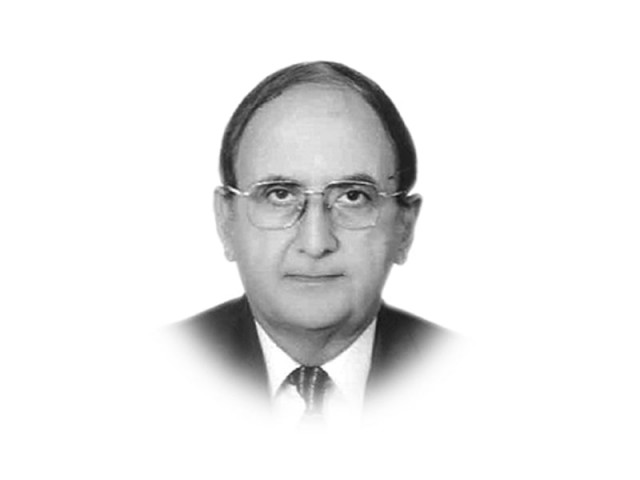Lawyers and politics
Senior lawyers and their professional organisations need to address the problems of young lawyers

The writer is an independent political and defence analyst. He is also the author of several books, monographs and articles on Pakistan and South Asian affairs
In Pakistan, the members of the legal profession function collectively when some purely professional issue is involved or they feel that their professional interests are at a stake. In all other situations, the lawyer community is divided on the basis of political and ideological considerations and personality-oriented factionalism. This can be seen in the context of intra-profession groupings that become pronounced at the time of elections of their professional bodies, i.e., the bar councils. They are equally divided on addressing national political issues, identifying with different political parties or ideological orientations. Of late, the hardline religious orientations have also made inroads into the profession, albeit at the periphery, and some of them publicly appreciate hardline and militant groups.
The lawyers have traditionally contested military regimes and civilian governments on civil and political rights, democracy and the rule of law, either by joining the struggle launched by different political parties and societal groups or through their professional organisations which directly question authoritarian rule. The first active and persistent participation of lawyers in a mass agitation was the political movement against the Ayub Khan regime (1968-69) that was spread over several months. It was in the post-1969 period that the federal and provincial governments and different political parties recognised the importance of the political role of lawyers’ organisations. Therefore, various civil and military governments attempted to penetrate the legal profession by winning over some lawyers. However, the legal profession as a whole maintained an autonomous identity. The role of the lawyers can be seen in the anti-Bhutto movement of 1977, the MRD movement in 1983 and 1986, as well as in the periodic protests on legal and constitutional issues, independence of judiciary, democracy and civil and political rights.
The most defiant and persistent street agitation by the lawyer community was the lawyers’ movement of 2007 in reaction to the unconstitutional attempt by then president General (retd) Pervez Musharraf to remove Chief Justice Iftikhar Muhammad Chaudhry from his office in March 2007. The lawyers’ movement was different from other agitations in Pakistan because it was initiated by the lawyers and the whole legal community and its various organisations were united for the cause of the ‘independence of judiciary’ and the ‘restoration of the chief justice’. As the movement took off, political parties and various societal groups decided to ride on the lawyers’ political bandwagon. This turned the lawyers’ movement into a genuinely nationwide political agitation, which was peaceful. It contributed to the downfall of General (retd) Pervez Musharraf, the return of Benazir Bhutto and Nawaz Sharif to Pakistan and the holding of the general elections in February 2008.
The downside of the lawyers’ movement was that being a single-issue movement, it could not sustain its internal unity and harmony after the main objective was achieved, i.e., the restoration of the chief justice. The lawyers returned to their old political grooves that revived their traditional political divisions. However, the habit of street agitation and defiance persisted among them but it was no longer under the unified command of their professional organisations and leadership. A section of the lawyers, especially the relatively young ones, began to use their newly-discovered power of defiance for coercing the district level judiciary for securing orders to their satisfaction. There were frequent complaints during the 2009-12 period of lawyers intimidating judges at the district level and below through protest, intimidation, locking up of courts and judges, and the use of abusive language. A section of young lawyers has continued to use agitation and violence from time to time to pursue their demands vis-a-vis the government and junior-level courts.
The latest incident has been the massive protest by lawyers after two of their colleagues were killed by a policeman in the course of a confrontation in Daska, Punjab. This was the worst example of excessive use of coercion by the police. The lawyers enjoyed the moral support of other sections of the population on this issue and their protest lasted for a couple of days. However, they engaged in extreme violence and, on the second day of the protest, the situation turned extremely ugly in Lahore, where the mostly young lawyers engaged in violence. This undermined the moral basis of their protest.
Three factors explain the defiant and violent disposition of most young lawyers. First, there is an overall decline in the trust that people have in state authorities ensuring fairness and justice for the aggrieved party when a state agency is involved in wrongdoing. Defiance and violence has become a common practice in such situations. Second, a large section of young lawyers was pampered by former chief justice Iftikhar Chaudhry after his restoration in 2009. A large number of those involved in unprofessional behaviour during 2009-12 professed their loyalty to the former chief justice. Third, with the increase in number of law colleges, a large number of young people enter the profession every year. Unfortunately, the profession does not offer much hope to many of them in the early years of their professional lives. This causes frustration and alienation among them, pushing them towards extreme methods. Senior lawyers and their professional organisations should address the problems of young lawyers and advise them on professional ethos and self-restraint. This will foster moderation and restraint in the legal profession and the society as a whole.
Published in The Express Tribune, June 1st, 2015.
Like Opinion & Editorial on Facebook, follow @ETOpEd on Twitter to receive all updates on all our daily pieces.
















COMMENTS
Comments are moderated and generally will be posted if they are on-topic and not abusive.
For more information, please see our Comments FAQ